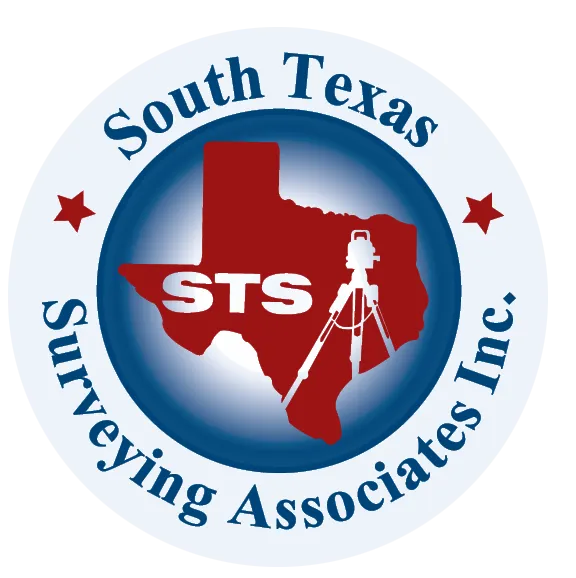Surveying Texas Since 1980 Family Owned, Customer Devoted | Firm #10045400 | 281-556-6918
See Our Latest Blogs

Managing Overlapping Easements in Texas Commercial Real Estate: A Guide for Developers and Investors
"Texas, often referred to as the Lone Star State, is a thriving hub for economic growth and innovation, making it an attractive destination for commercial real estate investment." - Chris Evans
How to Handle Overlapping Easements in Texas Commercial Real Estate
In the world of commercial real estate, particularly in a fast-growing state like Texas, property rights and access rights are often complex and layered. One of the most challenging issues that property owners and developers encounter is overlapping easements. Easements grant certain parties the right to use specific parts of a property for purposes like access, utilities, or drainage, without transferring ownership. However, when multiple easements overlap, they can create conflicts and operational challenges, complicating property management, development plans, and even financing.
Overlapping easements can impact everything from project timelines to property value. Understanding how to navigate these overlapping rights is essential for developers, investors, and property owners in Texas’s commercial real estate sector. In this article, we’ll explore the different types of easements, the problems associated with overlapping easements, and how land surveys and legal strategies can help resolve these issues, ensuring smooth project development and compliance.
Understanding Easements in Texas Commercial Real Estate
An easement is a legal right that allows one party to use part of another party’s property for a specific purpose. Easements are common in commercial real estate and are essential for access, utility installation, drainage, and other operational needs. In Texas, there are several types of easements that may apply to commercial properties, each with unique implications for property rights.
Types of Easements in Commercial Real Estate
Utility Easements: These allow utility companies to install and maintain power lines, water pipes, gas lines, or sewer systems across a property. Utility easements are typically permanent and can limit how a property owner uses the affected area.
Access Easements: Also known as right-of-way easements, these allow specific individuals or the public to access certain parts of a property, such as a driveway that passes through another property.
Drainage Easements: These enable the flow of water across a property and may be required by local regulations for flood control. Drainage easements are essential in areas prone to flooding or where stormwater management is necessary.
Conservation Easements: These are typically used to protect natural resources on a property and may restrict certain types of development or land use. While less common in urban settings, conservation easements are relevant in areas where natural preservation is prioritized.
Overlapping easements occur when multiple easements intersect, creating competing usage rights on the same piece of land. For instance, a utility easement for power lines might overlap with a drainage easement, complicating how each is maintained and impacting what the property owner can do with the land. In Texas’s densely developed commercial areas, overlapping easements are not uncommon and require careful management.
Challenges Posed by Overlapping Easements
Overlapping easements create a unique set of challenges that can complicate property ownership, limit development options, and even reduce the property’s market value. Here are some of the primary issues associated with overlapping easements in Texas commercial real estate.
Limited Land Use: When multiple easements overlap, each may restrict land use differently. For example, a utility easement may prevent construction of permanent structures, while a drainage easement may prohibit alterations to the natural water flow. These overlapping restrictions can make it challenging for developers to utilize the property fully and limit options for building or expansion.
Access and Maintenance Conflicts: Overlapping easements can create disputes over maintenance responsibilities and access rights. For instance, if both a utility company and a property owner need access to the same area for different purposes, there may be conflicts over who has priority. This can disrupt ongoing operations, delay projects, and increase the cost of property management.
Impact on Property Value: The presence of easements typically reduces a property’s usable space, and overlapping easements compound this issue. When multiple easements affect a single area, it can reduce the property’s overall value, as potential buyers or tenants may see these restrictions as a drawback. In competitive Texas markets, this can impact leasing rates and sale prices.
Legal Disputes and Liability: Overlapping easements can lead to legal disputes between easement holders, property owners, and third parties. These disputes can be costly and time-consuming, often requiring mediation or litigation to resolve. In some cases, property owners may be held liable if they interfere with an easement holder’s rights, resulting in potential fines or damages.
How Land Surveys Help Identify and Manage Overlapping Easements
Land surveys are an essential tool in identifying, documenting, and managing easements on a property. For Texas property owners dealing with overlapping easements, a thorough survey provides a clear understanding of where each easement is located and how it affects the property.
Boundary Surveys: A boundary survey establishes the exact borders of a property, providing a baseline for identifying any existing easements. This survey helps property owners understand where each easement begins and ends, making it easier to navigate overlapping rights.
ALTA/NSPS Surveys: An ALTA/NSPS survey is a comprehensive survey that provides detailed information on property boundaries, easements, encroachments, and improvements. These surveys are often required in commercial real estate transactions and financing because they offer a complete picture of the property’s legal and physical characteristics. For properties with overlapping easements, an ALTA survey can reveal how each easement affects the land, supporting informed decision-making for owners and developers.
Topographic Surveys: Topographic surveys provide information about the property’s physical features, such as elevation changes and natural drainage patterns. For overlapping easements that include drainage and utility lines, a topographic survey is particularly useful in assessing how each easement interacts with the land’s natural characteristics.
Easement-Specific Surveys: In some cases, surveyors conduct surveys specifically for easements. These surveys map out the exact location, purpose, and restrictions of each easement. For properties with multiple easements, an easement-specific survey can be invaluable in understanding how each affects property usage and identifying potential conflicts.
Strategies for Resolving and Managing Overlapping Easements
Resolving overlapping easements often requires a strategic approach that involves negotiation, legal expertise, and detailed property data. Here are some common strategies used by Texas property owners and developers to address overlapping easements.
Negotiating Easement Modifications: In some cases, easement holders may be open to modifying the terms of their easement to reduce overlap. For example, a utility company might agree to adjust the location of an underground line to avoid a drainage easement. Working with legal professionals and surveyors, property owners can negotiate these changes to minimize restrictions and improve land use.
Establishing Maintenance Agreements: When overlapping easements create access or maintenance conflicts, establishing a formal maintenance agreement can help. These agreements specify who is responsible for maintaining each easement and set guidelines for access, reducing the potential for disputes. Maintenance agreements are particularly valuable for properties with shared access or utility easements.
Seeking Easement Releases: In certain cases, an easement may no longer be necessary. Property owners can work with the easement holder to seek a release, which legally removes the easement from the property. Easement releases are typically granted when an easement’s purpose is no longer relevant or when both parties agree that it is no longer needed.
Using Buffer Zones and Design Modifications: For developers, creating buffer zones around overlapping easements or modifying the project design can reduce the impact of easements on the property. For instance, landscaping or open spaces can be placed around easement areas to avoid conflicts with buildings or infrastructure. This approach allows developers to work within easement limitations without compromising the project’s overall vision.
Benefits of Addressing Overlapping Easements Early
Reduced Project Delays: By addressing overlapping easements early in the planning process, property owners can prevent delays caused by access conflicts or regulatory issues.
Increased Property Value: Properties with well-managed easements are more attractive to buyers and tenants, as they offer a clearer understanding of usage rights and fewer restrictions.
Enhanced Legal Protection: Understanding and resolving easement conflicts protects property owners from potential legal liabilities and disputes.
Improved Land Use: By clarifying overlapping easements and negotiating adjustments, property owners can maximize their property’s usable space and develop projects that align with their goals.
Frequently Asked Questions (FAQs)
What is an overlapping easement, and why does it matter in commercial real estate?
An overlapping easement occurs when two or more easements intersect on the same area of a property, creating competing rights. This matters because overlapping easements can restrict land use, complicate development plans, and lead to legal conflicts.
Can land surveys help with overlapping easements?
Yes, land surveys, especially ALTA/NSPS surveys and easement-specific surveys, provide detailed information on the location, purpose, and restrictions of each easement, helping property owners understand and manage overlapping easements.
What are common types of easements that may overlap in Texas commercial properties?
Common types include utility easements, drainage easements, access easements, and conservation easements. These easements may overlap, especially in densely developed or environmentally sensitive areas.
How can property owners resolve conflicts caused by overlapping easements?
Property owners can negotiate modifications, establish maintenance agreements, seek easement releases, or adjust project designs to minimize the impact of overlapping easements.
Do overlapping easements affect property value?
Yes, overlapping easements can reduce a property’s usable space and limit development options, potentially impacting its market value and appeal to buyers or tenants.
Who can help property owners address overlapping easements?
Licensed surveyors, real estate attorneys, and land use consultants can assist property owners in understanding, negotiating, and resolving issues related to overlapping easements.
Navigating Overlapping Easements in Texas Commercial Real Estate
Overlapping easements are a common but complex challenge in Texas’s commercial real estate market. By conducting thorough land surveys, understanding the implications of each easement, and using strategic negotiation or design adjustments, property owners and developers can manage these issues effectively. With the right approach, overlapping easements need not be a barrier to successful commercial development in Texas, allowing property owners to maximize their investment potential and maintain clear ownership rights.
Delivering Land Surveys with Attention to Detail
George Owens
Commercial Broker

I have worked with many surveying companies, but South Texas Surveying stands out for their exceptional professionalism, attention to detail, and commitment to their clients.
Kim Wexler
Project Manager

Their accurate and thorough surveys make my job a lot easier, their ability to communicate effectively with all parties involved is commendable. I highly recommend South Texas Surveying.
James Cart
Homeowner

As a new homeowner, I was thoroughly impressed with the professional service provided by South Texas Surveying. I high recommend their services to any one buying a home in Houston.
Contact Us
Email: [email protected]
Office Address: 11281 Richmond Ave
BLDG J, Suite 101,
Houston, TX 77082
Office Hours: Mon – Fri 8:00am – 5:00pm
Office Phone Number: 281-556-6918
11281 Richmond Ave
BLDG J, Suite 101,
Houston, TX 77082
Firm Number: 10045400
Resources
© Copyright 2024 South Texas Surveying Associates
